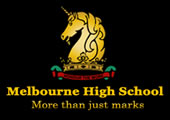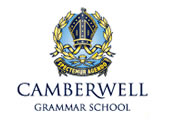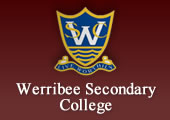Higher education courses can be taken to earn an advanced degree and continue your studies in Australia. There are three main types of higher education which lead to Bachelor, Master and Doctoral Degrees.
In Australia it is quite common for students to enroll in a double or combined Bachelor Degree program which leads to the award of two Bachelor Degrees. This is most common in the fields of arts, commerce, law and science.
Australian institutions offer a wide range of courses 每 from science to management and commerce, humanities to engineering, and law to health sciences. Australian institutions rank among the world*s best by discipline, particularly in engineering and technology, medicine, environmental science, and accounting and finance.
There are 43 universities in Australia [40 Australian universities, two international universities, and one private specialty university]. Along with our universities, many other institutions offer higher education courses. You can search for institutions and courses using the Institution and Course Search on this website.
Our quality assurance
School education in Australia includes preschool, preparatory [or kindergarten], primary school, secondary school [or high school] and senior secondary school [or college].
Schooling lasts for 13 years, from preparatory to senior secondary. School is compulsory until at least the age of 16. Types of schools include government schools, non-government schools [including faith-based schools such as Catholic or Islamic schools] and schools based on educational philosophies such as Montessori and Steiner. All schools must be registered with the state or territory education department and are subject to government requirements in terms of infrastructure and teacher registration.
Australian schools do more than just educate students. They prepare them for life − developing communication skills, self-discipline and respect for themselves, their peers and their world. Schools offer a broad curriculum in the key learning areas 每 English, mathematics, studies of society and the environment, science, arts, Languages Other Than English [LOTE], technology, health and physical education. They also believe strongly in the benefits of a rounded education 每 including the teamwork, self-expression and personal development that happen outside the classroom.
In Australia, students will enjoy a diverse learning environment that is as personally enriching as it is educational, and develop the skills and qualities needed in a changing world.
A higher standard of learning
Australian schools are among the finest in the world. See for yourself what makes an Australian education so valuable:
- Small class sizes [a maximum of 30 students in a class].
- University-trained and qualified teachers and specialist teachers in subject areas.
- Facilities of a high standard 每 including a high level of technology, with all schools having computers and internet access.
- 'Gifted and talented* programs to extend students who are high achievers.
- 'High Achievement* programs, which see the top students studying university-level subjects for advance credit.
- Individual learning programs for students who require additional learning support.
Quality assurance frameworks where schools must meet required standards.
Producing thought leaders
The Australian school curriculum prepares you for your future. Our schools aim to develop students into independent and successful learners, confident and creative individuals, and active and informed citizens 每 with the view to giving them all the skills, knowledge and capabilities to thrive in a globalised world. From Kindergarten to Year 12, Australian schools focus on providing equity for every student, and striving for excellence in all areas of education.
Teaching styles and assessment methods
A variety of teaching methods are used, including: teacher-directed learning, student research, group projects and presentations, visual presentations, e-learning and interactive classrooms. A variety of assessment methods are used to assess student outcomes. These may include individual research projects, group assignments, oral and visual presentations, the use of technology including PowerPoint, podcast or vodcast presentations, as well as the more traditional class tests and assignments. National and state testing programs ensure standards are met and maintained.
School qualifications
After completion of senior secondary school [Years 11 and 12] students sit for exams and receive an official certificate of qualification. The name of this certificate varies within Australia's state-based education systems but regardless of what the certificate is called, it is recognised by all Australian universities, higher education and vocational education and training institutions, as well as many institutions internationally.
All Australian schools offer a strong welfare structure to ensure the ongoing support of every student. These include:
- International student coordinators present in every school.
- A student welfare team.
- Year advisers.
- School counsellors.
- Careers advisers to assist students with planning and applying for post-secondary study.
- English as a second language support staff and programs.
- Students learn with local Australian students.
- Accommodation in homestays: all host families must have a police check to meet requirements of child protection legislation and homes must meet required standards; students have a 24 hour emergency contact number.
- Some schools offer boarding.








